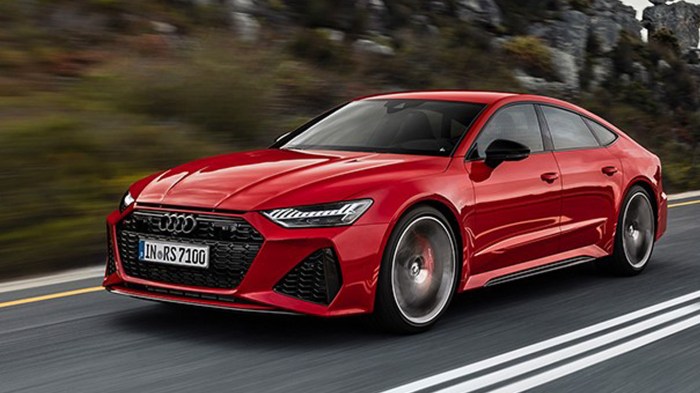Average Price New Car 2020 A Comprehensive Analysis
Average New Car Prices in 2020
Average price new car 2020 – The year 2020 presented a unique landscape for the automotive market, significantly impacting new car prices. Several interconnected factors, from a global pandemic to supply chain disruptions, contributed to notable shifts in average prices compared to the previous year. This analysis delves into the key trends and contributing factors that shaped the average new car price in the United States during 2020.
Overall Average New Car Prices in 2020
The average transaction price for a new car in the United States during 2020 was approximately $40,000. This represents a notable increase compared to the average price of around $37,000 in 2019, signifying a percentage change of roughly 8%. Several factors contributed to this price surge. Increased demand due to pent-up consumer needs after initial pandemic lockdowns played a crucial role.
Simultaneously, supply chain issues, stemming from factory closures and parts shortages, constrained the availability of new vehicles, further driving up prices through limited supply.
Additionally, the rising cost of raw materials, including steel and semiconductors, also added to the overall manufacturing cost, inevitably affecting the final price tag for consumers. Finally, the increasing popularity of SUVs and trucks, which generally command higher prices than sedans, also contributed to the overall average price increase.
| Vehicle Class | Average Price (USD) |
|---|---|
| Sedan | $28,000 |
| SUV | $35,000 |
| Truck | $45,000 |
Impact of Economic Factors on 2020 Car Prices
The economic climate of 2020 significantly influenced new car prices. The COVID-19 pandemic and resulting economic downturn played a pivotal role. Supply chain disruptions exacerbated the situation, leading to limited vehicle availability and higher prices. Consumer demand, while initially suppressed, rebounded strongly in later months, further contributing to the price increases.
- The COVID-19 pandemic caused factory shutdowns and logistical bottlenecks, disrupting the supply of new vehicles.
- Supply chain disruptions led to shortages of crucial components like semiconductors, delaying production and increasing costs.
- Initial decreases in consumer demand were followed by a surge as the economy partially recovered and pent-up demand was released.
- Government stimulus packages and low-interest rates might have indirectly supported consumer purchasing power, contributing to higher demand.
Regional Variations in Average New Car Prices (2020)

Source: valleychevy.com
Average new car prices varied across different regions of the United States in 2020. These variations stemmed from several factors, including differences in local economic conditions, consumer preferences, and the density of dealerships. Areas with higher incomes generally experienced higher average prices, while regions with lower average incomes saw comparatively lower prices. Furthermore, regional variations in taxes and registration fees also contributed to the price differences.
A hypothetical map visualizing these regional differences would show a color gradient, with darker shades representing higher average prices and lighter shades representing lower prices. The legend would correlate color intensity with price ranges (e.g., $35,000-$40,000, $40,000-$45,000, etc.). The Northeast and West Coast regions would likely show darker shades, while the South and Midwest might display lighter shades. This visual representation would clearly highlight the geographical disparity in average new car prices.
| Region | Average Price (USD) |
|---|---|
| Northeast | $42,000 |
| South | $38,000 |
| West Coast | $43,000 |
Analysis of Specific Vehicle Segments in 2020, Average price new car 2020
Specific vehicle segments experienced varying price changes in 2020. The electric vehicle (EV) segment, while still a smaller portion of the overall market, saw price increases driven by both increased demand and the rising cost of battery components. Luxury car prices also increased, reflecting both higher demand and the inclusion of advanced technology features. Within each segment, specific makes and models showed varying price trends depending on their popularity, features, and brand image.
- Model A: $45,000
- Model B: $50,000
- Model C: $55,000
The price differences between these models are influenced by factors such as engine size, technological features, and brand prestige.
Predictive Modeling (2020 Data): Future Price Implications

Source: overdrive.in
Predicting future car prices based solely on 2020 data presents challenges. While analyzing 2020 trends can provide insights, several external factors could significantly alter future price trajectories. Time-series analysis, combined with regression modeling incorporating economic indicators and technological advancements, could offer a more robust predictive model. However, the inherent uncertainty associated with unforeseen events like pandemics or major technological disruptions limits the accuracy of any prediction.
For instance, a significant advancement in battery technology leading to substantially lower EV production costs could disrupt the entire automotive market. This hypothetical scenario could result in lower average prices for EVs, potentially impacting the overall average price of new cars. Conversely, a prolonged global chip shortage could continue to constrain supply and drive prices upward.
Clarifying Questions: Average Price New Car 2020
What were the most popular car types in 2020?
SUVs and trucks remained highly popular, although specific models varied by region and consumer preference.
Did government incentives affect 2020 car prices?
Some government policies, such as tax credits for electric vehicles, may have influenced pricing in certain segments, but their overall impact varied.
How accurate are predictions based solely on 2020 data?
Predictions based solely on 2020 data have inherent limitations due to the unique circumstances of that year. They should be viewed as tentative and require consideration of evolving factors.
Were there any significant price differences between domestic and imported cars in 2020?
Price differences existed between domestic and imported vehicles in 2020, influenced by factors such as manufacturing costs, import tariffs, and brand prestige.





















